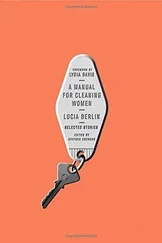Anonymous
A WOMAN IN BERLIN
Diary 20 April 1945 to 22 June 1945
Introduction by
ANTONY BEEVOR
Afterword by
HANS MAGNUS ENZENSBERGER
Translated from the German by
PHILIP BOEHM
In the early hours of 16 April 1945, civilians in the eastern quarters of Berlin were awoken by a distant rolling thunder. The vibrations were so strong that telephones began to ring on their own and pictures fell from their hooks. Women emerged slowly from their apartments and exchanged meaningful looks with neighbours. They hardly needed to speak. The long-awaited Soviet offensive had at last begun sixty miles to their east.
One and a half million Red Army soldiers of Marshal Zhukov’s First Belorussian Front were bursting out from the bridgeheads on the west bank of the river Oder. Facing them were the desperate scrapings of the embattled Third Reich: mainly boys from the Hitler Youth, old men from the Volkssturm, groups of cadets from Luftwaffe military schools and a stiffening of veterans and SS. They had little ammunition, hardly any shells for their artillery and insufficient fuel for their few remaining armoured vehicles. Yet Goebbels, the Reich commissar for the defence of Berlin as well as minister of propaganda, had declared that the line of the Oder was a wall on which the Asiatic hordes’ would smash themselves. Surrender was out of the question. Himmler had just issued orders that any German male found in a house displaying a white flag be shot. The propaganda ministry organized graffiti squads, dressed as ordinary Germans, to paint slogans such as: ‘We will never surrender!’ and ‘Protect our women and children from the Red beasts!’
The argument for fighting on was largely based on Goebbels’s own horror propaganda of enemy atrocities, which for once turned out to be no exaggeration. In the autumn of 1944, Soviet troops had made their first foray into East Prussia, laying waste to the village of Nemmersdorf before being repulsed by a German counter-attack. Goebbels had rushed forward camera teams to film the corpses of women and girls who had been raped and murdered by drunken Red Army soldiers. The images on the Nazi newsreels had been so appalling that many women presumed they were part of a gross exaggeration by the ‘Promi’, the propaganda ministry. But then, in late January and early February, after the main Soviet assault on East Prussia and Silesia, refugees passing through Berlin recounted stories of rape, looting and murder on a terrifying scale. Yet many Berlin women, while certain that such things happened in the countryside and isolated communities, refused to believe that mass rape was possible in the public view of a capital city. Others, increasingly nervous, began rapidly to instruct young daughters in the facts of life just in case the worst happened.
Berlin at the time contained just over two million civilians, of whom the large majority were women and children. It was typical of the crazed irresponsibility of the Nazi regime at this time that Hitler rejected any idea of evacuating them while there was still time. He openly disbelieved the military commander of Berlin who told him that there were 120,000 babies and infants left in the city and no provisions for a supply of milk. Consciously or unconsciously, Hitler appears to have imitated Stalin’s refusal to allow the evacuation of civilians from Stalingrad in order to force his troops to defend the city more bravely.
This diary written by a 34-year-old journalist, begins on Friday 20 April, four days after the opening bombardment. It was Hitler’s birthday. Nazi flags were raised over ruined edifices in the centre of the city, where US Air Force Flying Fortresses by day and RAF Lancasters by night had destroyed 90 per cent of the buildings. Signs erected in Hitler’s honour proclaimed: ‘The Fighting City of Berlin Greets the Führer’. Even Hitler’s military staff had no idea how close the fighting was. Soviet tank armies had now smashed their way through the German defences and were starting to encircle the city. The first shells from long-range artillery would land in the city’s northern suburbs that evening.
The diary, which filled two exercise books and a clothbound notebook, continues for just over two months until 22 June. This period covers the bombardment, the brief streetfighting in most districts, Hitler’s suicide on 30 April, the surrender of the last pockets of resistance on 2 May and then the occupation of the city by the conquerors.
This diary was first published anonymously in 1954 in an English translation in the United States and in Britain in 1955 by Secker & Warburg. A German language edition followed five years later in Geneva, and was highly controversial in Germany. Some accused it of ‘besmirching the honour of German women’. Rape and sexual collaboration for survival were taboo subjects in that post-war period, when men firmly reasserted their authority.
In 2003, A Woman in Berlin was republished in a new edition in Germany by Hans Magnus Enzensberger, one of Germany’s most distinguished men of letters, in his Die Andere Bibliothek series for Eichborn and who adds the Afterword to this edition. It subsequently emerged that the decision to republish followed the death of the anonymous author in June 2001 at the age of ninety. She had not wanted another edition during her lifetime after the storm it had provoked. A few months after its republication, however, Jens Bisky, a prominent journalist and critic, claimed that he had discovered the identity of the anonymous diarist and named her as Marta Hiller. Enzensberger was furious and accused Bisky of ‘ Skandaljournalismus ’. Though other journalists agree with Bisky and feel certain that Marta Hiller is the author, the only person to know for sure is Hannelore Marek, literary executor of the estate, who has at no point confirmed it. Bisky also cast certain doubts over the authenticity of the work, but Walter Kempowski, one of the most experienced editors of personal documents from the period, testified that he had examined all the original documents and the first typescript and was convinced that they were completely genuine.
It was perhaps inevitable that doubts would be raised about this book, especially after the scandal over the fake Hitler Diaries. And the great bestseller of the 1950s, Last Letters from Stalingrad , was found to be fictitious over forty years after its first appearance. On reading the earlier edition of this diary for the first time in 1999, I instinctively compared my reactions to the Stalingrad letters, which I had read five years before. I had become uneasy about the supposed Stalingrad letters quite quickly. They were too good to be true. One, for example, milked the emotions with a letter about a German concert-pianist in Stalingrad whose fingers had been broken. As soon as I was able to compare the published collection with genuine last letters from Stalingrad in the German and Russian archives, I was certain that they were false. Yet any suspicions I felt obliged to raise about A Woman in Berlin were soon discarded. The truth lay in the mass of closely observed detail. The then anonymous diarist possessed an eye which was so consistent and original that even the most imaginative novelist would never have been able to reproduce her vision of events. Just as importantly, other accounts, both written and oral, which I accumulated during my own research into the events in Berlin, certainly seemed to indicate that there were no false notes. Of course, it is possible that some rewriting took place after the event, but that is true of almost every published diary.
One of the reasons for questioning the diary’s authenticity is its literary merit.
Читать дальше












